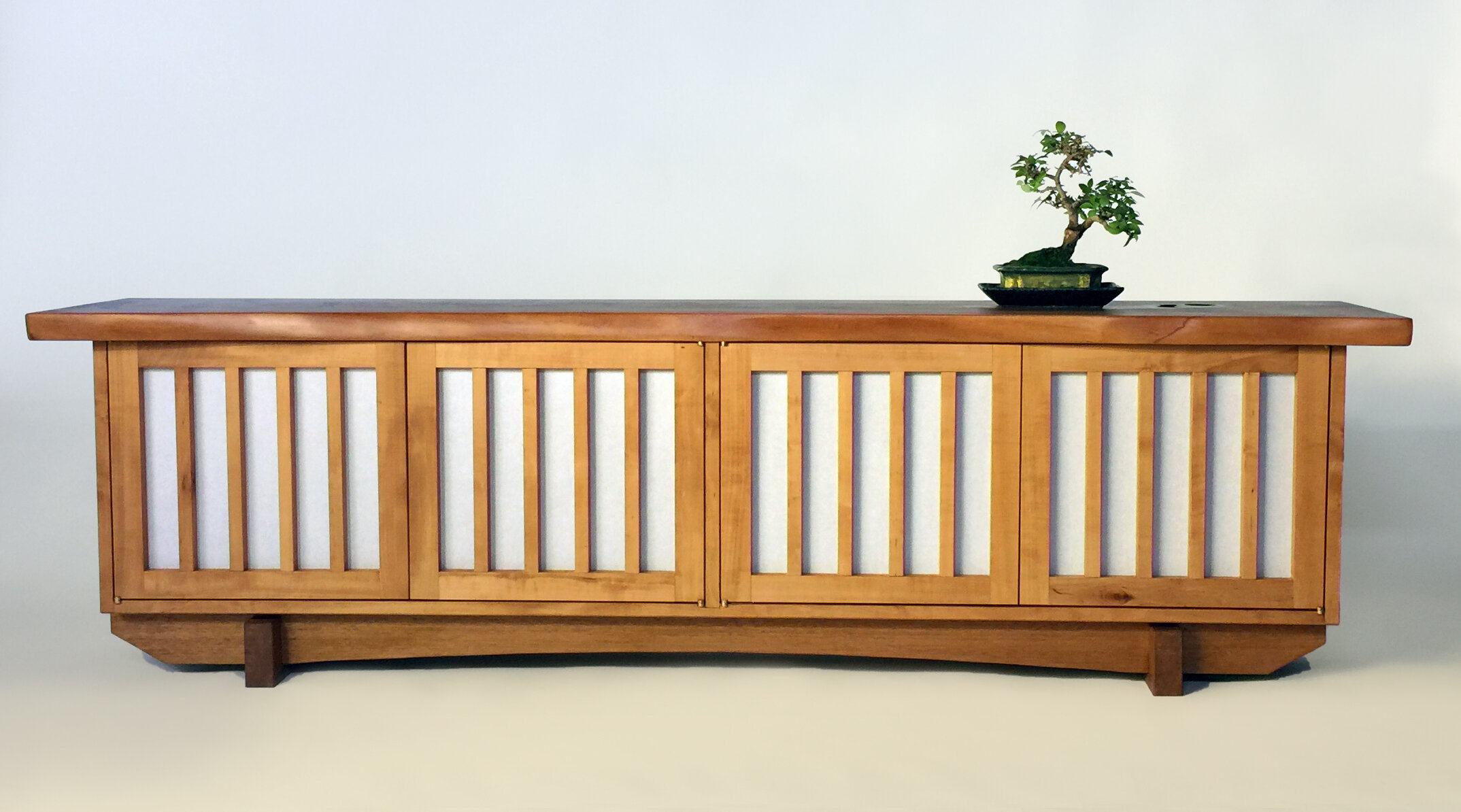
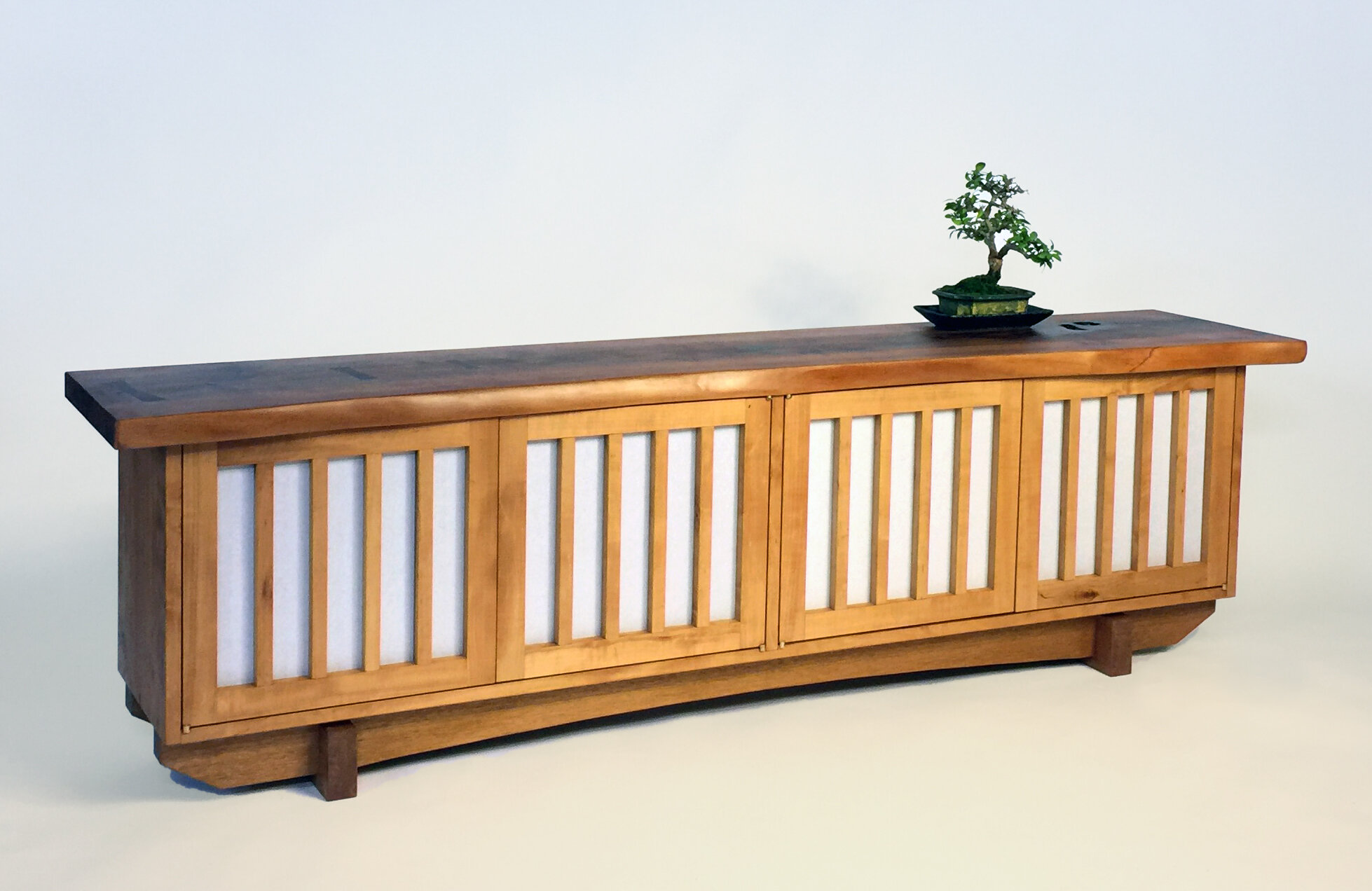
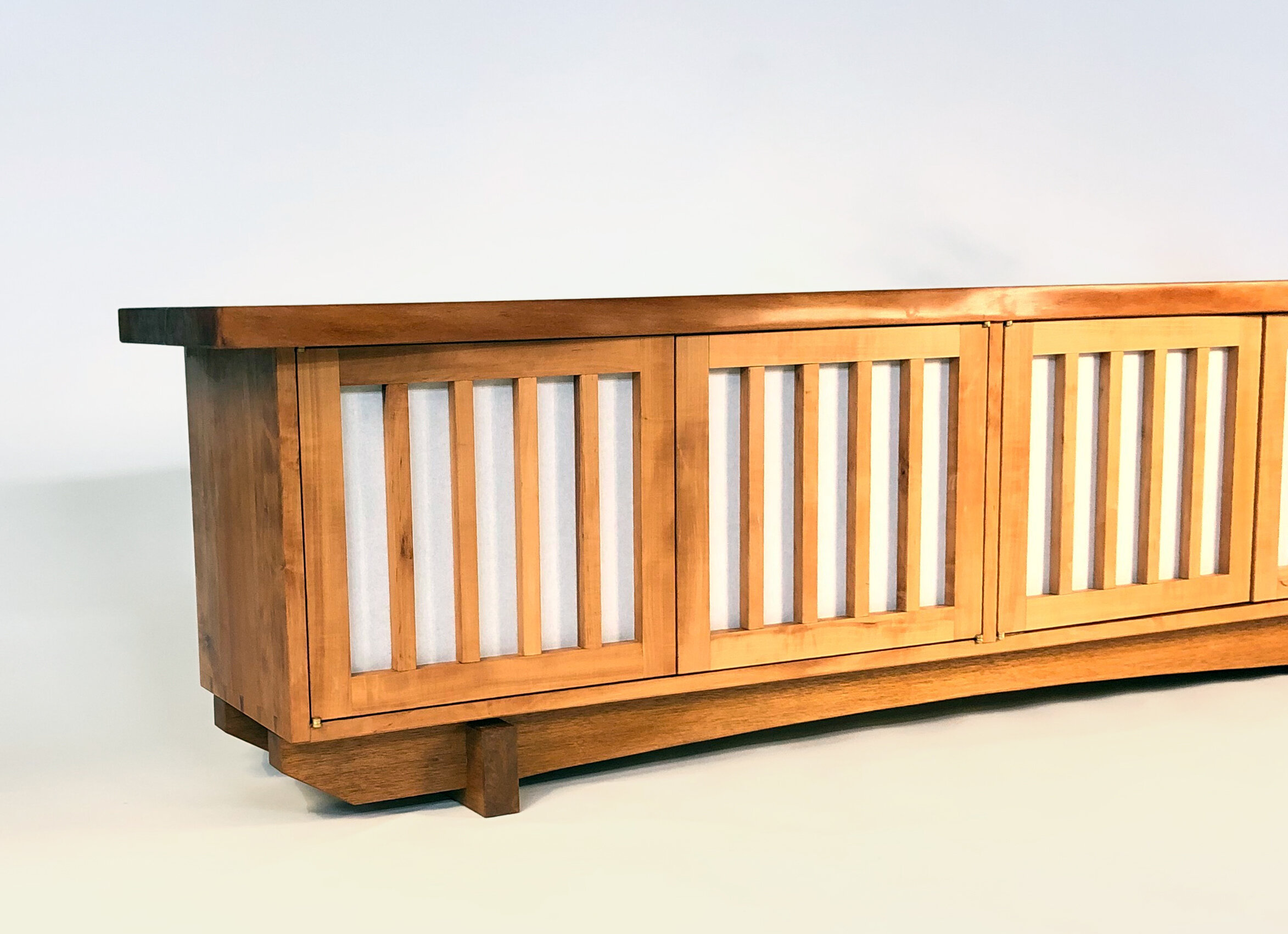
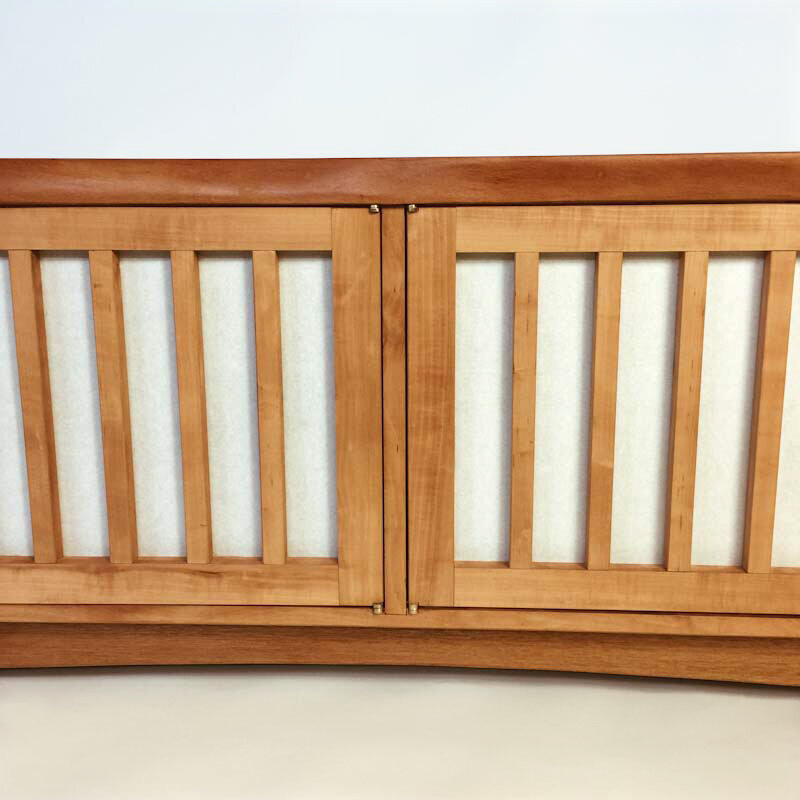
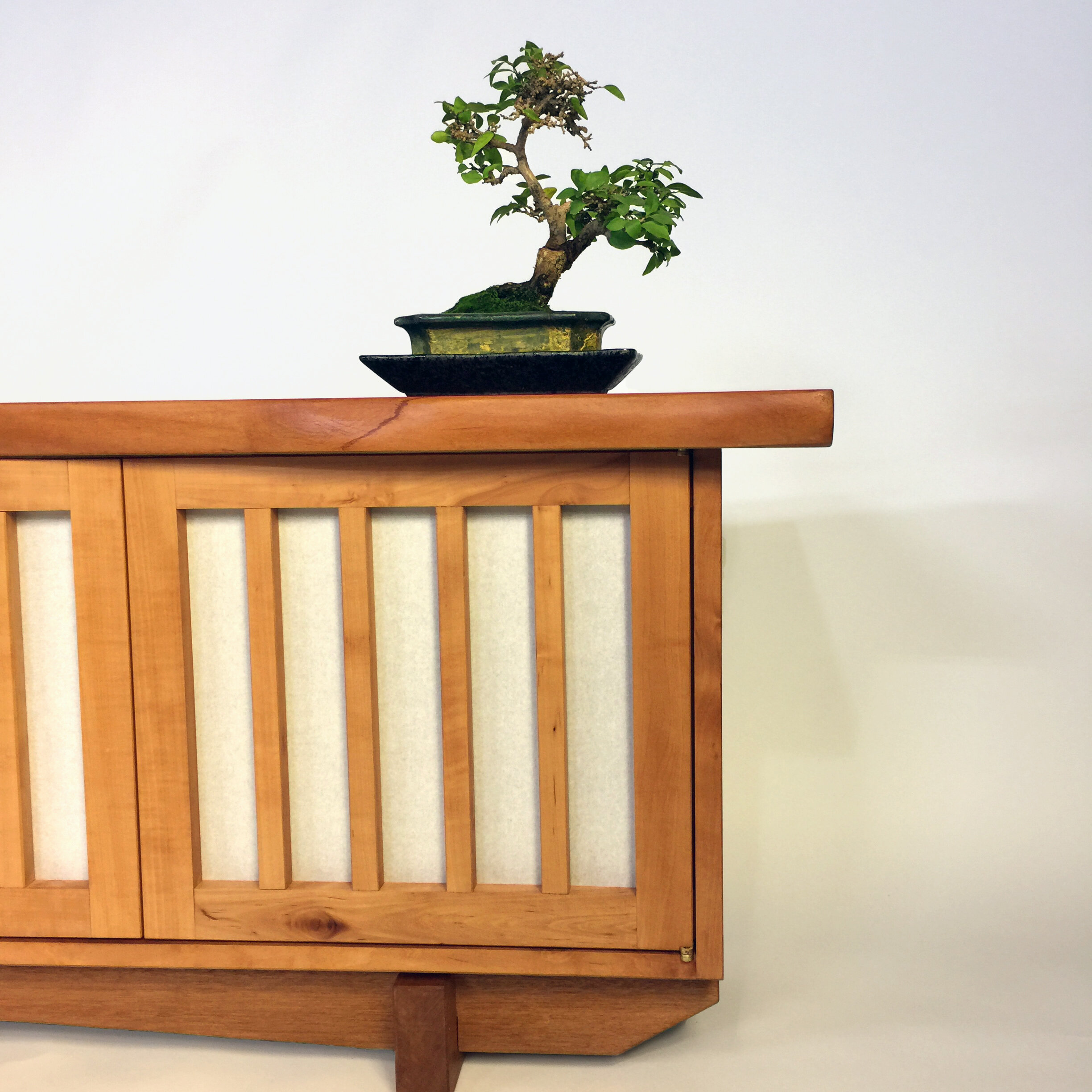
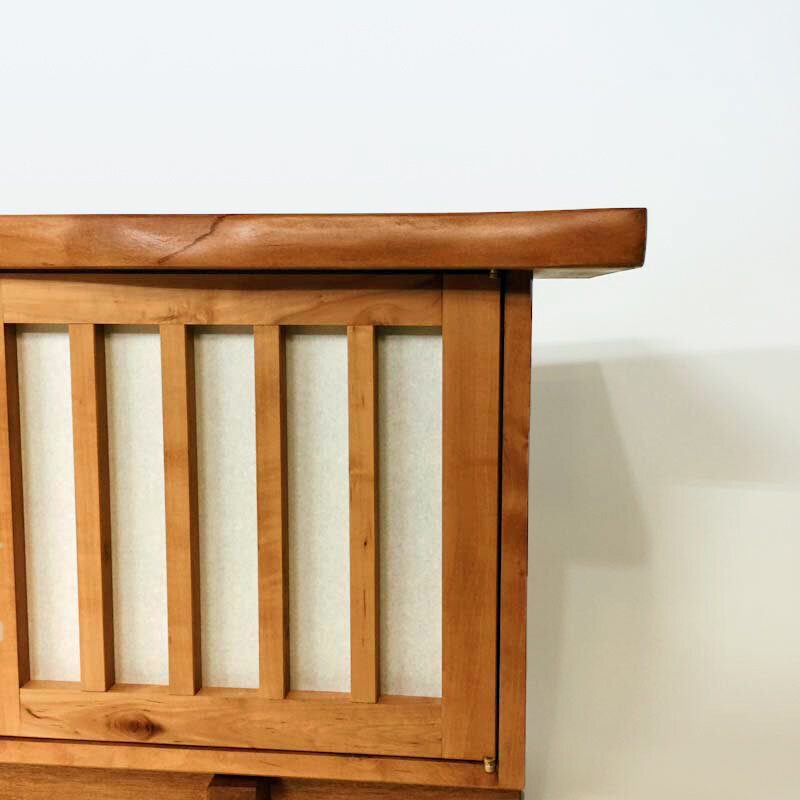
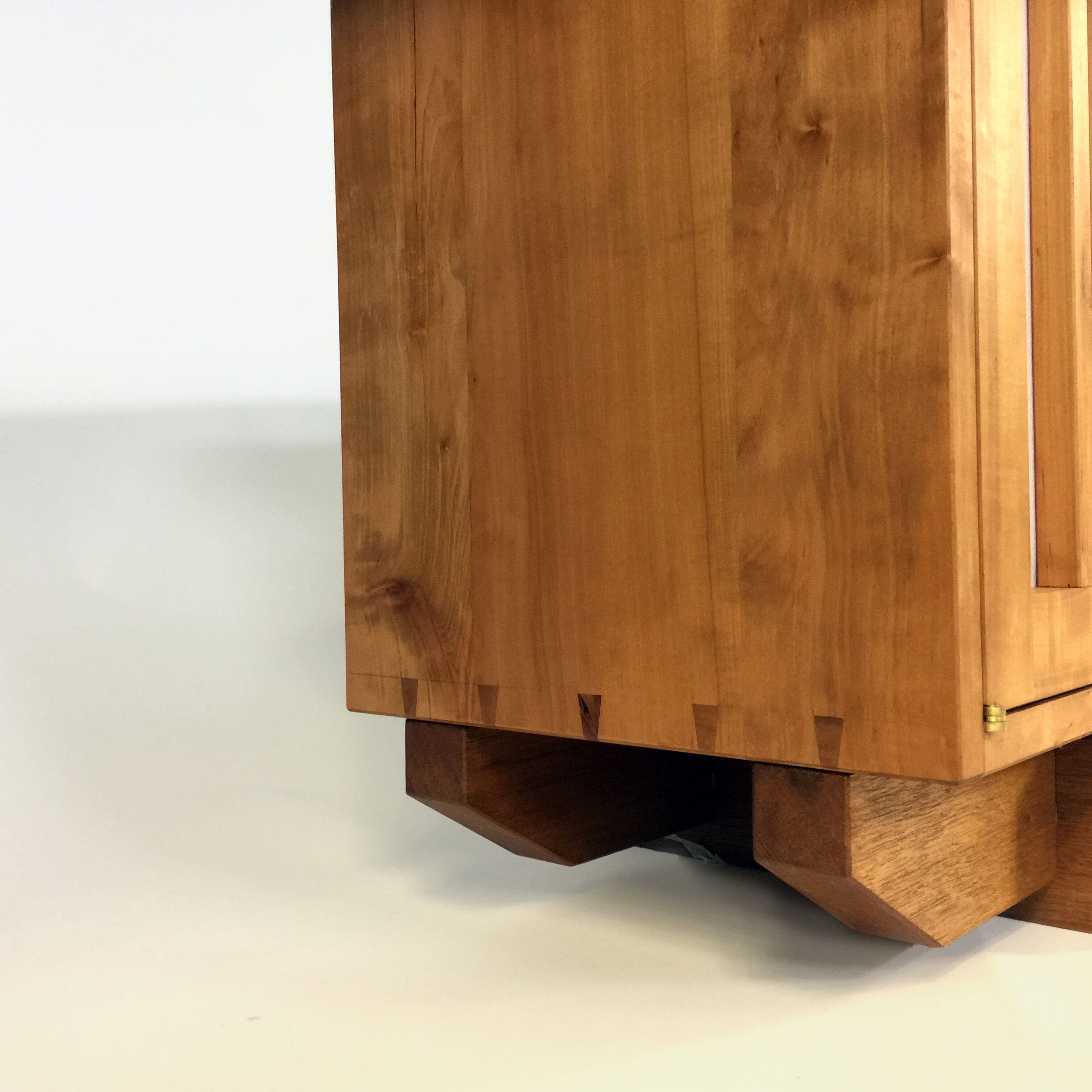
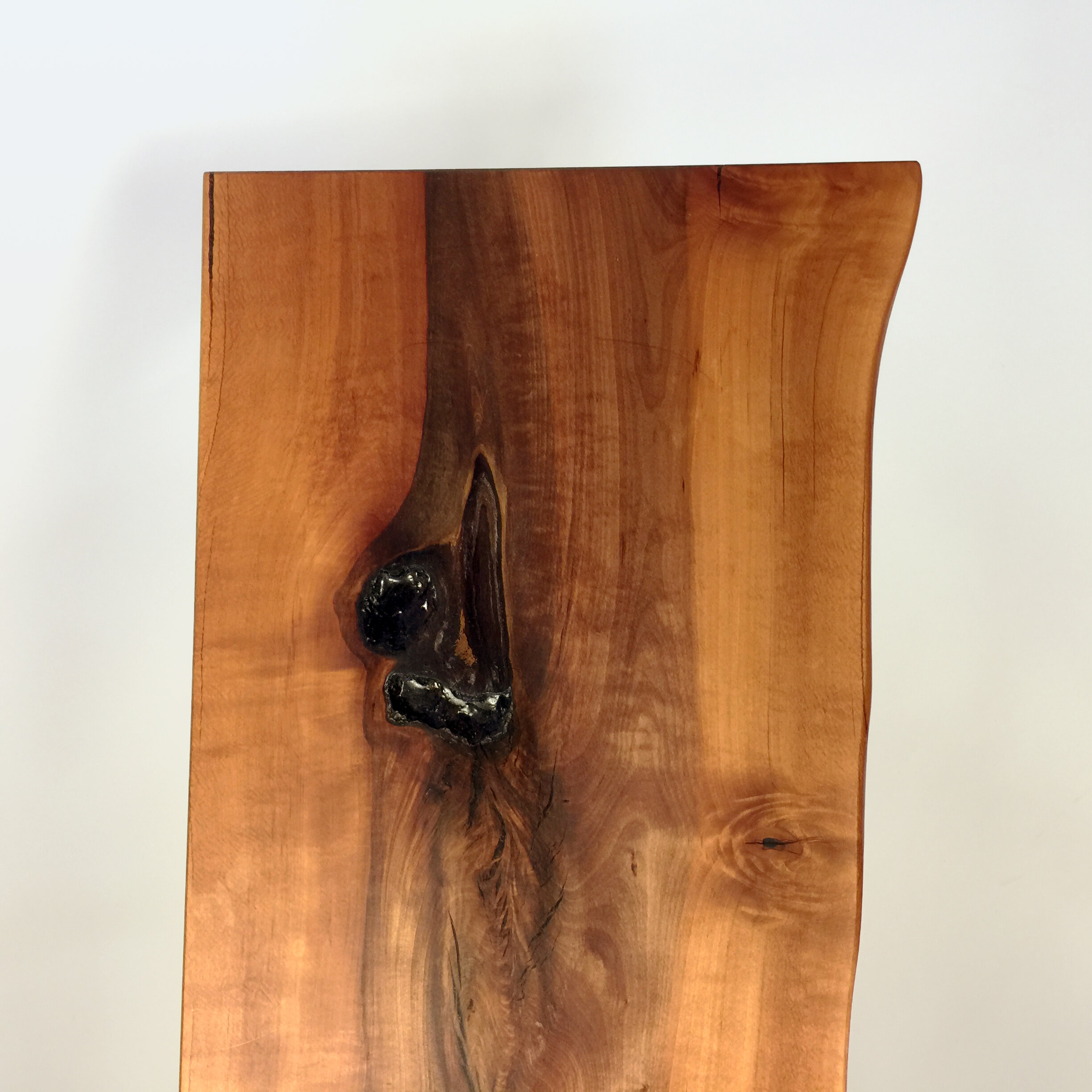
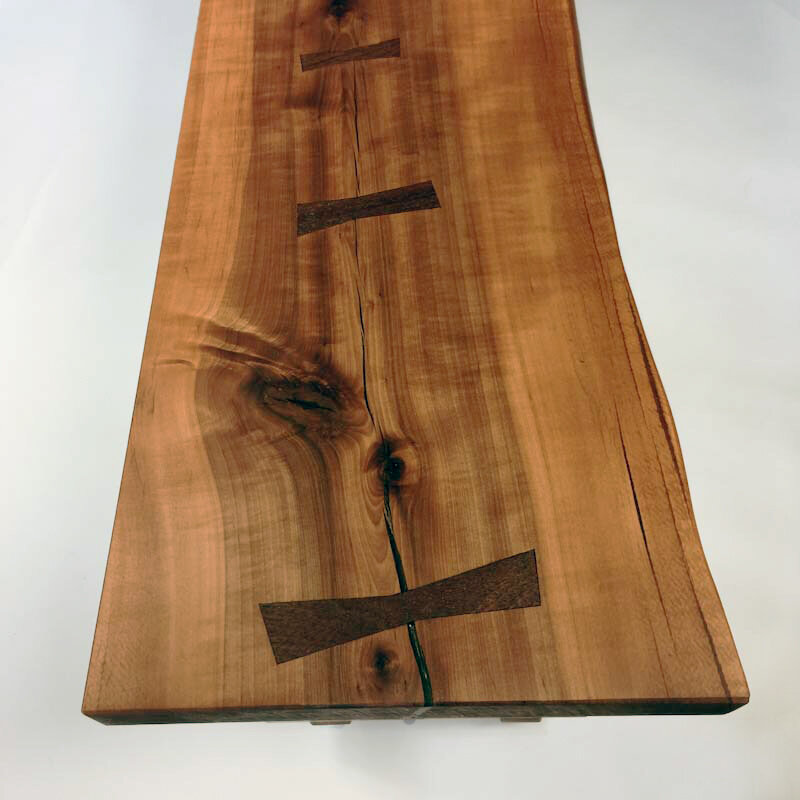

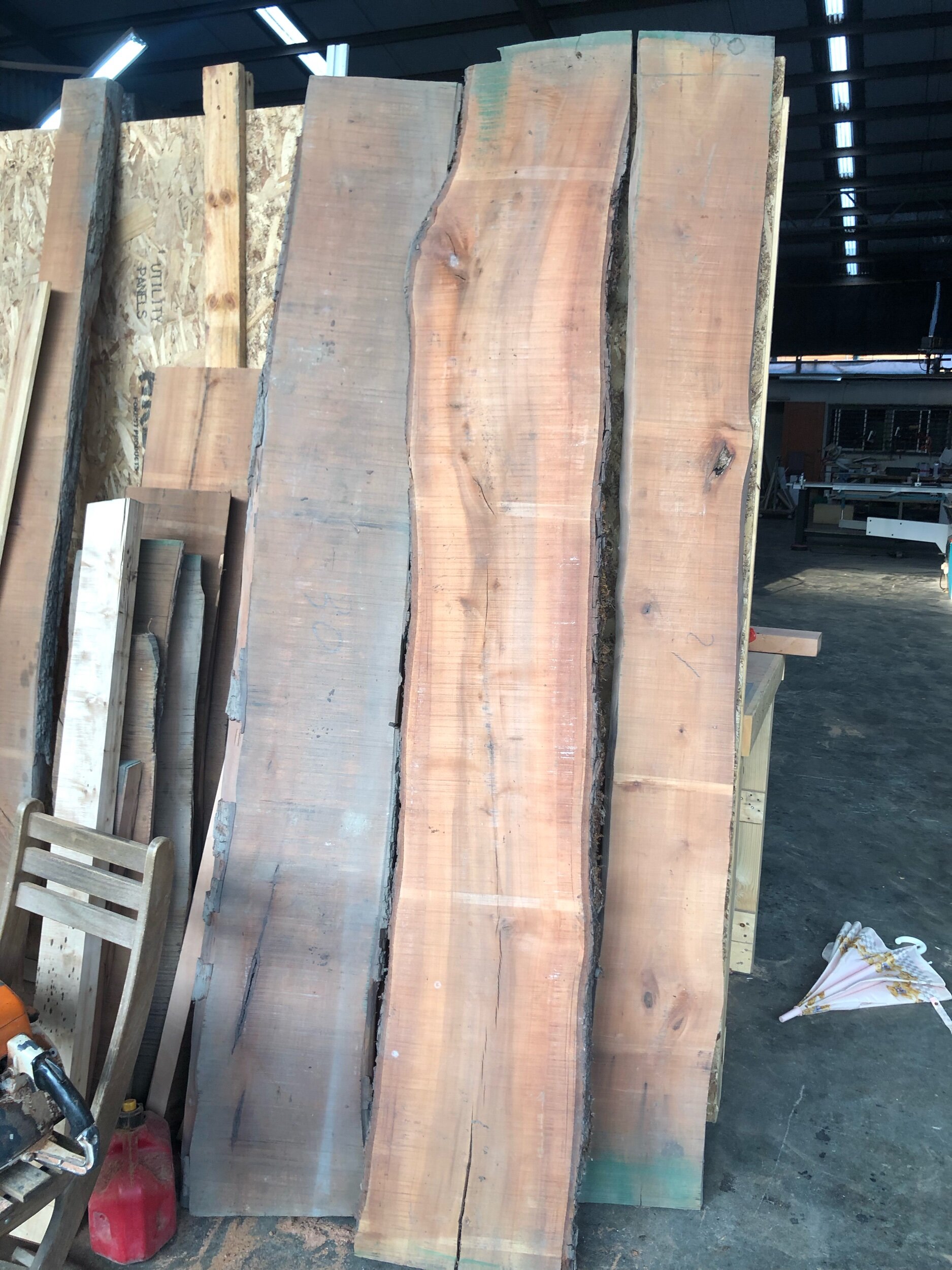
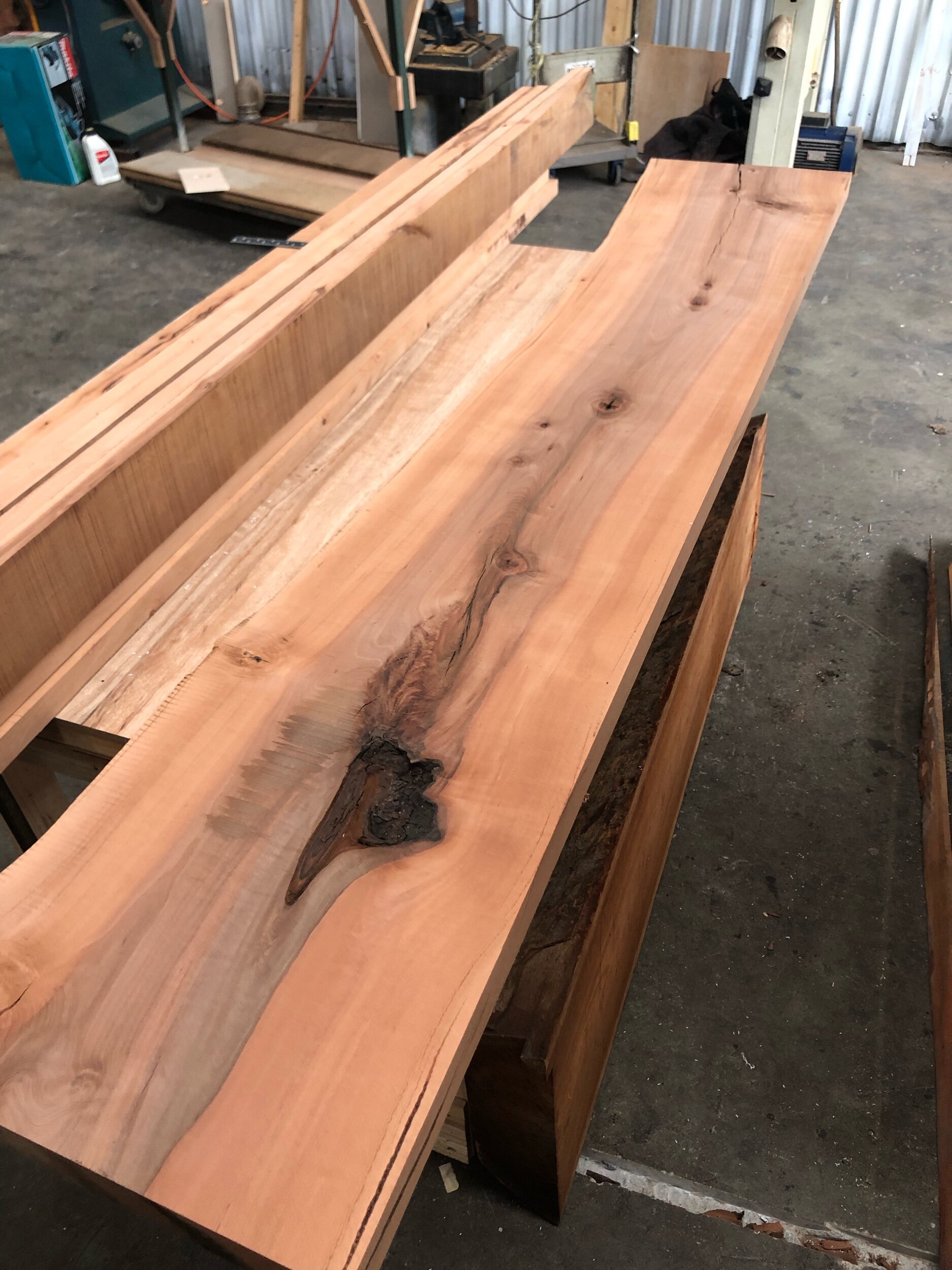
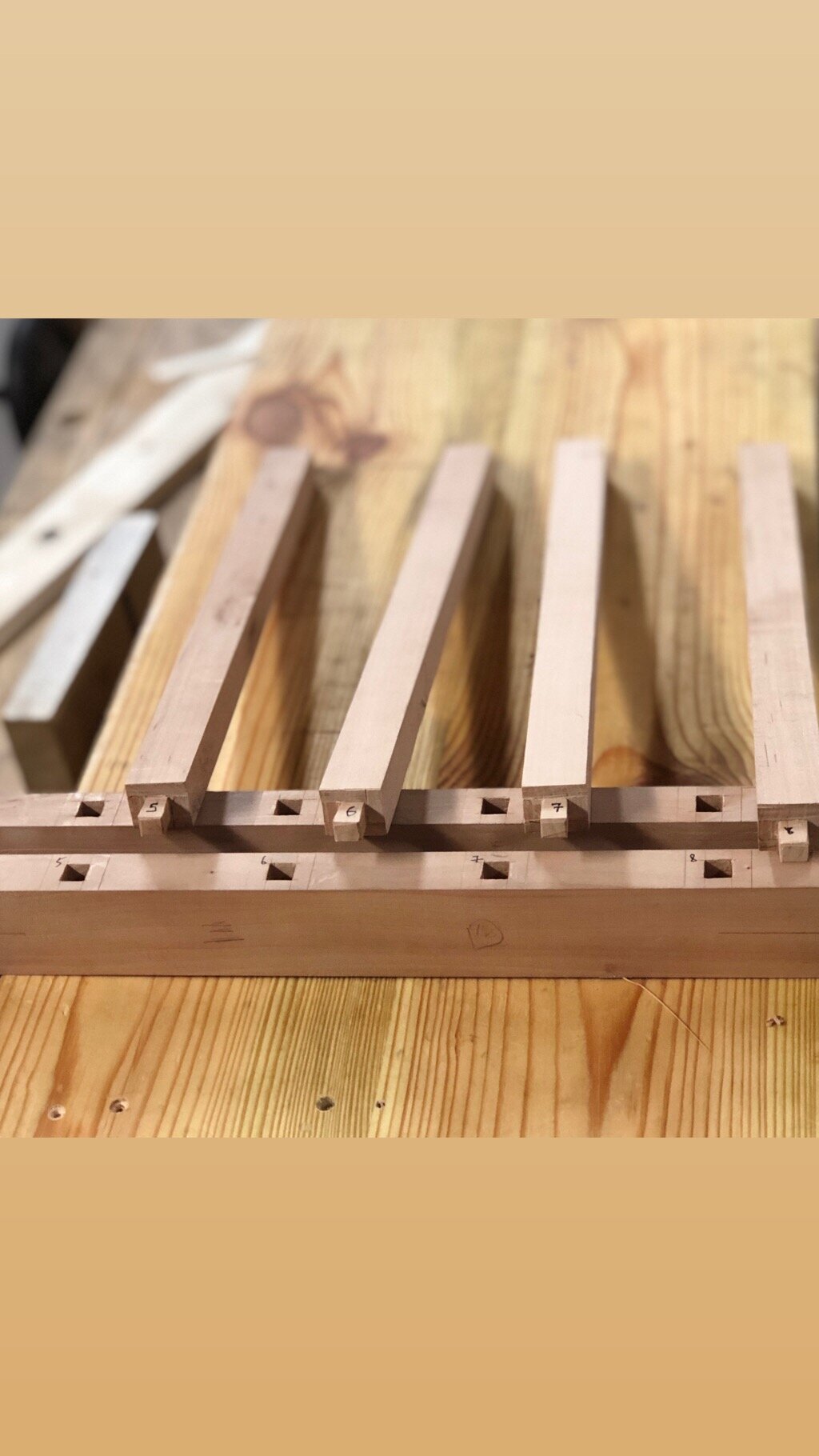
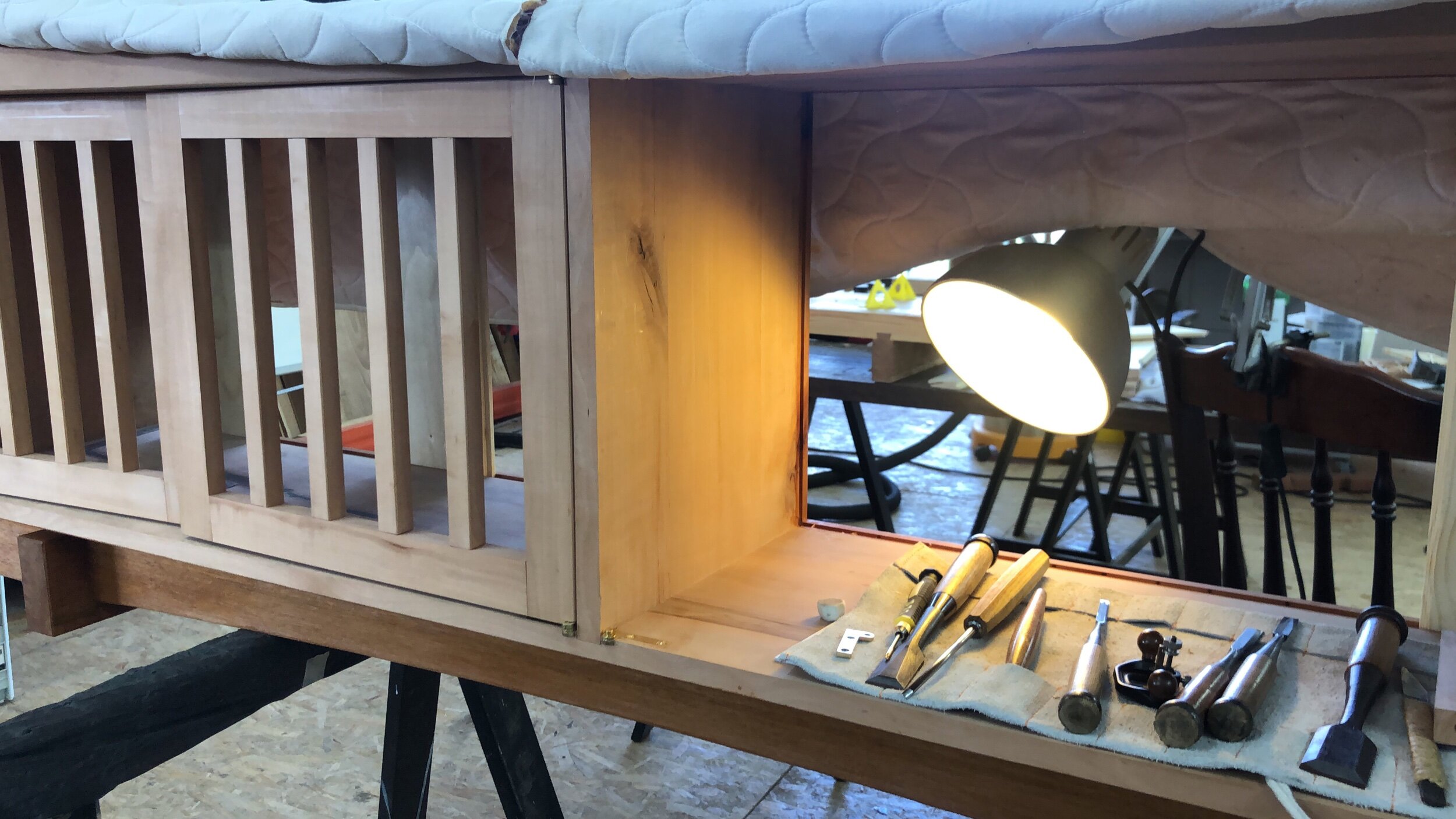

Your Custom Text Here
'Each flitch, each board, each plank can have only one ideal use. The woodworker, applying a thousand skills, must find that ideal use and then shape the wood to realize its true potential.
George Nakashima
Length 183cm depth 38-32cm height 53cm
Swiss pear wood, kapur wood and washi paper
Finished in Rubio monocoat and shellac
Design
The main board chosen was the widest board that I could find. The width determines the depth of the cabinet so I was quite reluctant to do any gluing up to increase the depth if it could be helped. All other parts of the carcass could could be constructed with glued up boards but the top had to be one piece.
I saw a bend along one of the top board edges and decided to use that live edge as the edge that was facing the front. In Japanese house construction, a beam that is slightly bent is used to face the entrance of the house so that visitors who walk into the house are greeted by a slight embrace. Its quite subtle and really subconscious. This bend in the main board also influenced the decision to make a slight bend in the legs stretcher as well.
There was a check / crack in the end of the board from drying so butterfly joints are put in to hold and prevent any future checking. The crack is also filled with clear epoxy resin.
The shoji style doors are chosen by the client. A compromise had to be reached because traditional shoji doors are sliding doors. They slide open and close on 2 or 3 tracks that are carved from the top and bottom. With the depth being close to being too shallow for use, a compromise was made to operate the doors in swing instead of sliding. This would allow the depth of the console to be maximized for the function it is built for. It was also clear that we would use very low profile knife / pivot hinges for this project and they would be the most tidy and refined looking. The hinges are made by Anton Gerner furniture from Australia.
This style of legs was used for an earlier kumiko sideboard. I first saw this style in Nakashima’s sideboards and really liked how simple and stylish they are. With this piece, a slight bend was introduced in the horizontal stretcher to match the bend that the top had. I think it makes the legs look sleeker.
Some videos taken from my workshop to give a better view have been added at the end of this page.
I am very pleased with how this project turned out.
'Each flitch, each board, each plank can have only one ideal use. The woodworker, applying a thousand skills, must find that ideal use and then shape the wood to realize its true potential.
George Nakashima
Length 183cm depth 38-32cm height 53cm
Swiss pear wood, kapur wood and washi paper
Finished in Rubio monocoat and shellac
Design
The main board chosen was the widest board that I could find. The width determines the depth of the cabinet so I was quite reluctant to do any gluing up to increase the depth if it could be helped. All other parts of the carcass could could be constructed with glued up boards but the top had to be one piece.
I saw a bend along one of the top board edges and decided to use that live edge as the edge that was facing the front. In Japanese house construction, a beam that is slightly bent is used to face the entrance of the house so that visitors who walk into the house are greeted by a slight embrace. Its quite subtle and really subconscious. This bend in the main board also influenced the decision to make a slight bend in the legs stretcher as well.
There was a check / crack in the end of the board from drying so butterfly joints are put in to hold and prevent any future checking. The crack is also filled with clear epoxy resin.
The shoji style doors are chosen by the client. A compromise had to be reached because traditional shoji doors are sliding doors. They slide open and close on 2 or 3 tracks that are carved from the top and bottom. With the depth being close to being too shallow for use, a compromise was made to operate the doors in swing instead of sliding. This would allow the depth of the console to be maximized for the function it is built for. It was also clear that we would use very low profile knife / pivot hinges for this project and they would be the most tidy and refined looking. The hinges are made by Anton Gerner furniture from Australia.
This style of legs was used for an earlier kumiko sideboard. I first saw this style in Nakashima’s sideboards and really liked how simple and stylish they are. With this piece, a slight bend was introduced in the horizontal stretcher to match the bend that the top had. I think it makes the legs look sleeker.
Some videos taken from my workshop to give a better view have been added at the end of this page.
I am very pleased with how this project turned out.
Front view with my bonsai
Note the bend in the top board. An accompanying bend is introduced to the leg stretcher below.
Low profile knife/ pivot hinges for doors.
outline of the right edge cascades from wide to narrow like a roof protecting its inhabitants.
Hand cut dovetail construction - each dovetail measures 6mm at the narrowest.
Depressions partially filled with epoxy resin. Much more character in the wood than if it had been fully filled.
3 butterfly joints and epoxy resin to hold the wood check.
The sketch plan
The boards in the raw form. The middle board stood out and shouted to me. It was thus made the main top of the console because of its bend. It calls out to offer a hug, an embrace to visitors.
The main top board trimmed to length and planed down, here you can see the bend and also the part where epoxy will be filled in. These are the natural aspects of the wood that nature presented to us that we feel strongly about preserving.
Shoji stiles for one of the 4 swing doors. They are all hand cut and individually numbered.
Getting ready for hand cutting recesses for the special knife hinges
Doors are fitted nicely using Anton Gerner knife / pivot hinges imported from Australia.
Media console in Swiss pear wood 1
Media console in Swiss pear wood 2
Media console in Swiss pear wood 3
Media console in Swiss pear wood 4